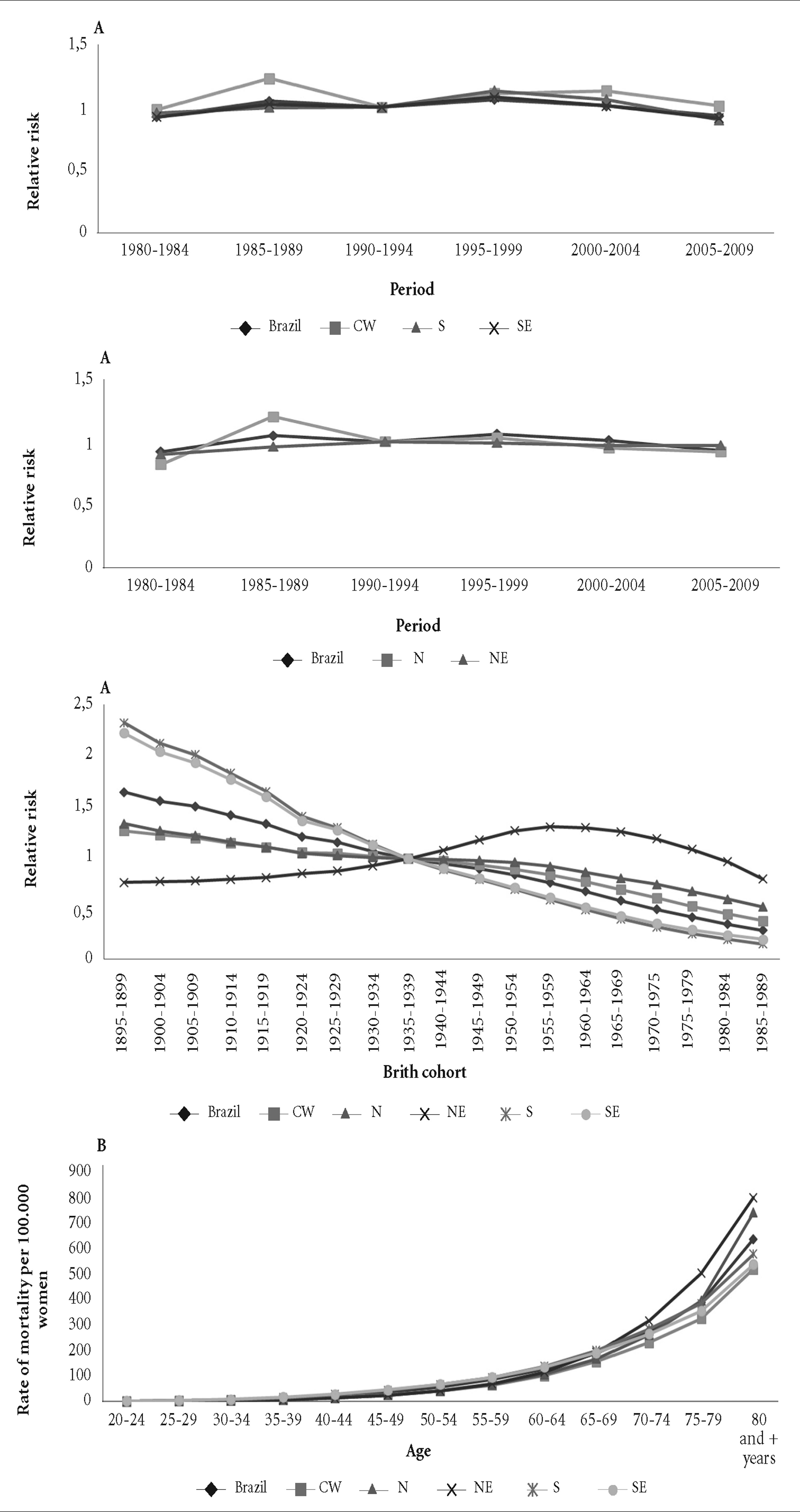Abstract
The objective of this study was to analyze the effect of age-period and cohort (APC) of birth on mortality for acute myocardial infarction in Brazil and its geographic regions, according to sex in the period from 1980 to 2009. The data was extracted from the Mortality Information System and was corrected and adjusted by means of proportional redistribution of records with sex and age ignored, ill-defined causes, and corrections were made based on the death sub-register. The APC was calculated using the Poisson regression model with estimable functions. The APC analysis on both sexes and in all regions of the country showed gradual reductions in the risk of death in birth cohorts from the decade of the 1940s, except in the Northeast. In this region, there have been progressive increases in the risk of death from the late 1940s for both sexes. This was up until the 1950s for men and the 1960s for women. It was concluded that the observed differences in the risk of death in Brazilian regions is the result of socio-economic inequalities and poor access to health services within the Brazilian territory, favoring early mortality for this cause especially in poorer areas.
Key words
Myocardial infarction; Mortality; Age effect; Period effect; Cohort effect



